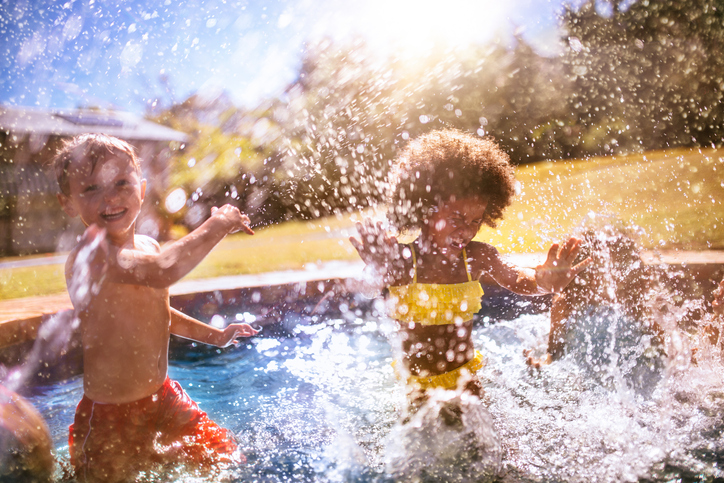"Don't Pee in the Pool" and Other Hygiene Best Practices

Record high temperatures paired with swim season means pools are crowded this summer, and families are reminded to prioritize swimming best practices to ensure an overall safe and healthy experience in the water. From enrolling their children in swimming lessons (a must for keeping them safe) to packing essentials like bathing suits, water bottles, sunscreen, life jackets, etc. for long days at the pool, families may have the basics covered though haven’t given thought to health and hygiene safety.
Step Into Swim shares top tips to keep in mind.
-
Don't Go to the Bathroom in the Water. When urine and chlorine mix in the pool, there is less chlorine available to kill germs because the pH balance is off, according to the CDC. Going to the bathroom in the pool mixes bodily fluids and waste with pool chemicals, which can spread germs as well as cause eye, nose and mouth irritations. It’s recommended that caregivers use swim diapers for babies and change them frequently. For toddlers and older kids who are potty trained, take regular bathroom breaks.
-
Take a Shower Before Jumping Into the Pool. The average swimmer brings millions of microbes, including germs, into the pool just from their hair, sweat, even skin and cosmetic products. Rinsing off before getting into the pool can help maintain the pool’s water quality and give swimmers a fresh start.
-
Stay Out of the Pool When Sick. Keep children out of the water if they don’t feel well or have a contagious illness. This will help minimize the risk of spreading germs.
-
Don't Drink Pool Water. Teach kids to avoid drinking pool water, which may contain chlorine and other pool chemicals as well as germs from other swimmers. vests should be worn by everyone, regardless of experience level, when in open water and while boating.
It’s integral for parents and caregivers to keep an eye on their children in the water to not only help reinforce these hygiene best practices, but to maintain general water safety as well, such as drowning prevention. In fact, constant supervision and learning how to swim from a qualified instructor are two of the best ways to help prevent drowning.
Ultimately, staying safe and healthy in the water is the goal. For more information on swimming best practices and the importance of learning to swim, check out this advice from Olympic swimmer Rowdy Gaines.


